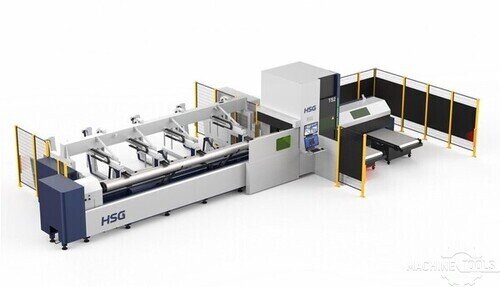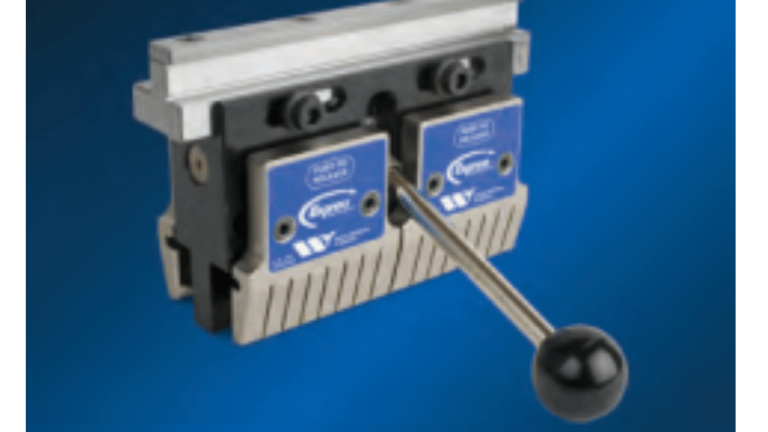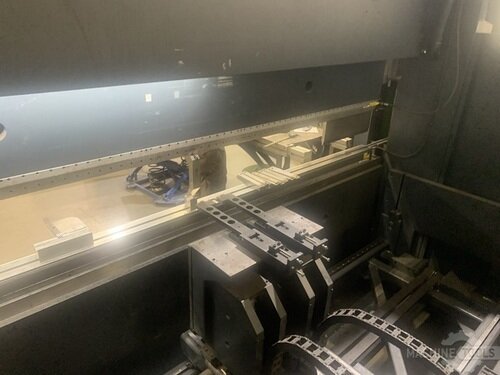As someone who’s spent years working alongside fabrication shops of all sizes, I’ve seen firsthand how the right equipment choices can make or break a shop’s growth. Every day, I help fabricators navigate tough decisions about lasers, press brakes, automation, and workflow—always with an eye toward efficiency, precision, and long-term profitability. My role at Mac-Tech isn’t just about selling machinery; it’s about partnering with shops to find practical solutions that fit their unique needs and support their teams in a changing labor market.
Understanding the Demands of Modern Fabrication: Efficiency and Workforce Realities
Fabrication shops today operate in a highly competitive environment. Customers expect faster turnaround times, tighter tolerances, and the ability to handle a variety of projects with minimal delays. This pressure means that shops must continually improve their production efficiency and adaptability. At the same time, many are grappling with persistent labor shortages—skilled operators are hard to find and even harder to retain.
Investing in technology isn’t just about keeping up with the competition; it’s about building a more resilient operation. Shops that rely solely on manual processes often struggle with bottlenecks, inconsistent output, and higher labor costs. That’s why more fabricators are exploring ways to automate repetitive tasks and allocate their skilled workers to jobs where they add the most value.
The Role of 3kW Tube Lasers in Expanding Shop Capabilities
A 3kW tube laser is a game-changer for many fabrication shops, especially those looking to diversify their offerings or step up production without committing to massive capital outlays. These machines can handle a wide range of materials and thicknesses, making them ideal for both job shops and OEMs. Their precision and speed open up new possibilities in part design and allow for more complex geometries that would be difficult or impossible with traditional saws or manual processes.
I’ve seen shops double their throughput and significantly reduce secondary operations by switching to tube lasers. The clean cuts, tight tolerances, and repeatability not only improve part quality but also streamline downstream processes like bending and assembly. With a 3kW power rating, these lasers strike a balance between capability and energy consumption, making them a practical choice for shops that want to increase capacity without a steep learning curve or excessive operating costs.
Entry-Level Automation: Bridging Labor Gaps and Reducing Bottlenecks
Pairing a 3kW tube laser with entry-level automation—such as basic load/unload systems or simple part sorting—is a smart way to maximize your equipment investment. Automation isn’t just for massive factories anymore. Even modest automation can free up operators, reduce manual handling, and keep the laser running consistently throughout the shift. This is especially valuable for shops that struggle to find enough skilled labor or want to reduce overtime.
I often advise clients to start with scalable automation solutions. Entry-level systems are affordable and easy to integrate, making them less intimidating for shops new to automation. They help maintain a steady workflow, minimize downtime, and reduce the risk of operator error, which ultimately leads to more predictable delivery schedules and happier customers.
Evaluating Performance: Integration with Press Brakes and Tooling Workflows
The benefits of a 3kW tube laser really shine when you look at the entire production process. Clean, accurate cuts from the laser make parts easier to handle during bending and assembly, reducing the need for rework and adjustment. When integrated with press brakes and smart tooling setups, you can achieve a seamless workflow—one that minimizes part handling and maximizes throughput.
I’ve worked with shops that have seen dramatic improvements by standardizing their laser and press brake operations. Automated part handling from the laser to the press brake not only speeds up production but also protects your investment in tooling by reducing damage from manual mishandling. This kind of integration is crucial for shops that want to boost productivity without sacrificing quality.
HSG TS2 HIGH SPEED TUBE FIBER LASER CUTTING MACHINE
R1 HIGH-SPEED TINY TUBE LASER CUTTING MACHINE
- Follow-up support for high precision
- Efficient multi-load loading
- Chuck jumping for short trailings
- Intelligent Bus operating System
Calculating ROI: Practical Considerations for Equipment Investment Decisions
Making the leap to a 3kW tube laser with entry-level automation is a significant investment, so it’s important to approach the decision with a clear understanding of your shop’s needs and goals. The return on investment (ROI) isn’t just about machine speed—it’s about reducing labor costs, minimizing scrap, and opening up new revenue streams with expanded capabilities.
I encourage clients to look beyond initial price tags. Consider savings in consumables, reduced overtime, increased machine uptime, and the ability to take on more complex or higher-margin work. In many cases, the payback period is shorter than expected, especially for shops that are already running at or near capacity. Working with an experienced partner can help you model different scenarios and choose equipment that aligns with your growth strategy.
Building Lasting Partnerships for Long-Term Success in Fabrication
At Mac-Tech, we believe that investing in new technology should come with ongoing support. From initial consultation and equipment selection to installation, training, and after-sales service, our goal is to help fabricators build lasting success. The right equipment is only part of the equation—you also need a partner who understands your business and is committed to your long-term growth.
Whether you’re exploring your first tube laser or looking to automate an existing line, I’m here to help you make informed decisions. By focusing on solutions that fit your shop’s unique needs, we can tackle today’s challenges and set you up for future opportunities. Let’s work together to make your fabrication shop more efficient, adaptable, and profitable.
FAQ
How much floor space does a typical 3kW tube laser with entry-level automation require?
Most setups can fit in a modest footprint, but exact requirements depend on part lengths and automation features. A site assessment can determine the best layout for your shop.
Will entry-level automation be difficult for my operators to learn?
Entry-level systems are designed for ease of use, with intuitive controls and minimal training required. Most operators adapt quickly with proper onboarding.
Can I expand automation later if my needs grow?
Yes, many entry-level solutions are modular, allowing you to add more automation as your production demands increase.
How do tube lasers improve part quality compared to saws or manual cutting?
Tube lasers provide cleaner, more precise cuts with less heat-affected zone, reducing the need for secondary finishing and improving fit-up for downstream processes.
What kind of maintenance is required for a 3kW tube laser?
Routine maintenance is straightforward, focusing on optics, filters, and basic cleaning. Preventive care and regular service checks keep uptime high.
Is it possible to finance equipment purchases?
Absolutely. Many suppliers, including Mac-Tech, offer flexible financing options to help shops manage cash flow and accelerate ROI.
Get Weekly Mac-Tech News & Updates








